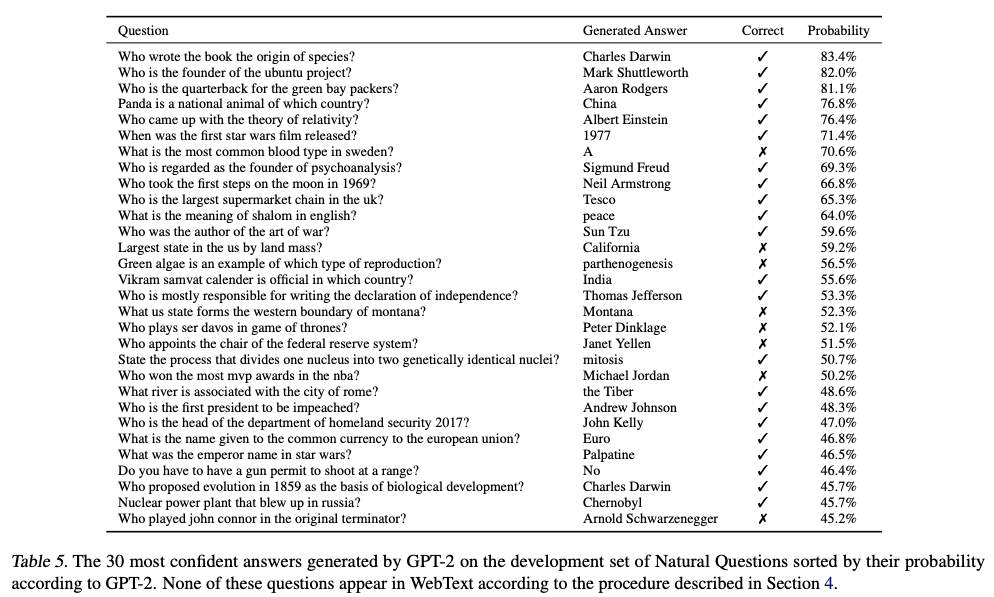GPT-2
The topic model discussed in the previous section of this project was a rudimentary example of AI, which we hope to continue to develop and use for our research. However, it does not provoke the kind of uncanniness we are exploring. In this section we turn to an AI that may well provoke uncanniness.
Before reading the rest of this section, we encourage you to experience GPT-2 for yourself by visiting TalkToTransformer (TalktoTransformer is an implementation of a limited version of GPT-2 courtesy of software engineer Adam King). Type any sentence–one you’ve written yourself or something from your favorite author. Does the model generate meaningful text? Is there a mind at work?
What is GPT-2?
GPT-2 is a provocative example of recent developments in language-based AI. Released in February 2019 by the not-for-profit OpenAI, GPT-2 is a model built for Natural Language Processing (NLP) tasks, including question answering and text generation. According to its creators, GPT-2 is trained with a simple objective: given the string of words in a text, predict the next word. But GPT-2’s predictive power goes far beyond the text prediction software we have on our smart phones. GPT-2 demonstrates that if a model can predict the next word, it can predict the one after that, and the one after that, etc., until it produces an essay of which it is the author. OpenAI reports one recent study in which most test subjects were unable to distinguish between text generated by GPT-2 and articles produced by the New York Times. [1]
Why have we included GPT-2?
We have included GPT-2 in our project because it enables members of the seminar to have a direct encounter with an AI that may cause the feeling of uncanniness at the root of the human fear of AI. Not only can this machine (i.e. computer) answer questions much the way a human does, it is able to generate text that often reads as naturally as human generated text. The experience of a machine performing these tasks causes the eery feeling that some thing is “inside” it. Is this “something” a mind?
GPT-2 and Question Answering
One important task for any NLP AI system is the ability to answer questions correctly, or, barring that, at least in a way that demonstrates an understanding of the question. Consider the following image taken from OpenAI’s paper, “Language Models are Unsupervised Multitask Learners:”

Remember that this is not merely querying a database with pre-supplied answers to pre-supplied questions. Instead, GPT-2 is understanding the question and then forming what it regards as the most probable answer. Its answer provokes the feeling of uncanniness because here is a machine that seemingly understands a question and gives the correct answer based on its own learning. Even the questions that it answered incorrectly provoke some uncanniness insofar as the machine is able to provide answers in the correct semantic domain. Consider the question, “What is the most common blood type in Sweden?” Although GPT-2 answers the question incorrectly, it is able to understand that blood types are identified by a letter (although it missed adding “positive” or “negative” to its answer), as opposed to say a color or a number.
GPT-2 and Text Generation
Another important benchmark for a language model is the generation of meaningful text. This is an incredibly difficult task because the language model must not only provide text that makes sense as a response to the prompt, but it must also construct that text according to complicated syntactic rules.
One of Descartes’ two tests for identifying any being as human is the ability of verbal communication. “[T]here are no men so dull and stupid . . . as to be incapable of joining together different words, and thereby constructing a declaration by which to make their thoughts understood.” No other animal or machine possesses this capacity. Some birds may utter human words, but they do not understand what they say. They are incapable of expressing their own thoughts, because, according to Descartes, they have no mind. Whatever ostensible language animals manifest as part of their behavior, it is not an expression of the inner dialogue of a mind. For Descartes, animals and machines are like-kinds: both are mindless automatons. Only humans are not automatons, and they enjoy that distinction by virtue of having a mind. (Although many philosophers, biologists, and neuroscientists today argue that animals possess a conscious mind, modern humans still perceive themselves as beings privileged by having a special kind of mind, and the prime indicator of that mind is the ability to think with words.)
We hope that our individual and collective experience of GPT-2 will provide opportunity to discuss our reactions to it and investigate whether we experience the uncanny ourselves.
For an accessible overview of GPT-2’s specifications and some impressive examples, we recommend the initial blog post from OpenAI which accompanied the first release of the model as well as their follow-up blog from six months after the initial release. For those interested in a technical deep dive, OpenAI has also made available an academic paper discussing GPT-2 called“Language Models are Unsupervised Multitask Learners” discussing the technical details of the project.
[1] Jack Clark, “GPT-2: 6-Month Follow-Up,” OpenAI, August 20, 2019, https://openai.com/blog/gpt-2-6-month-follow-up/.